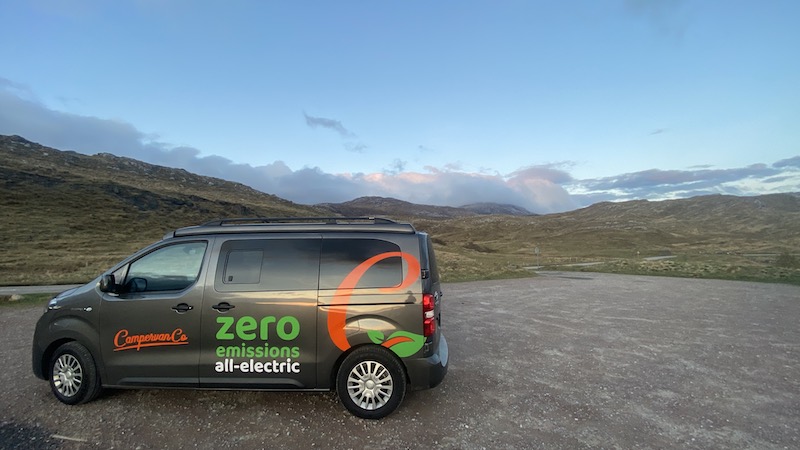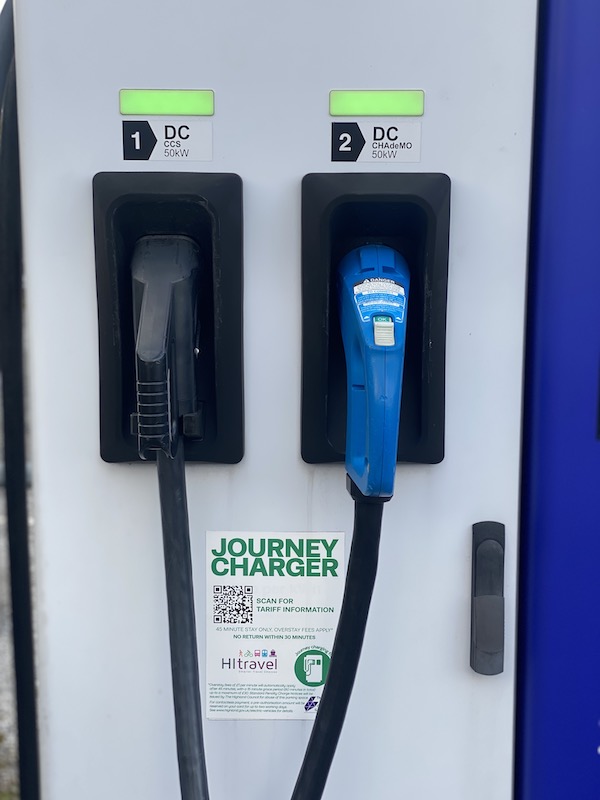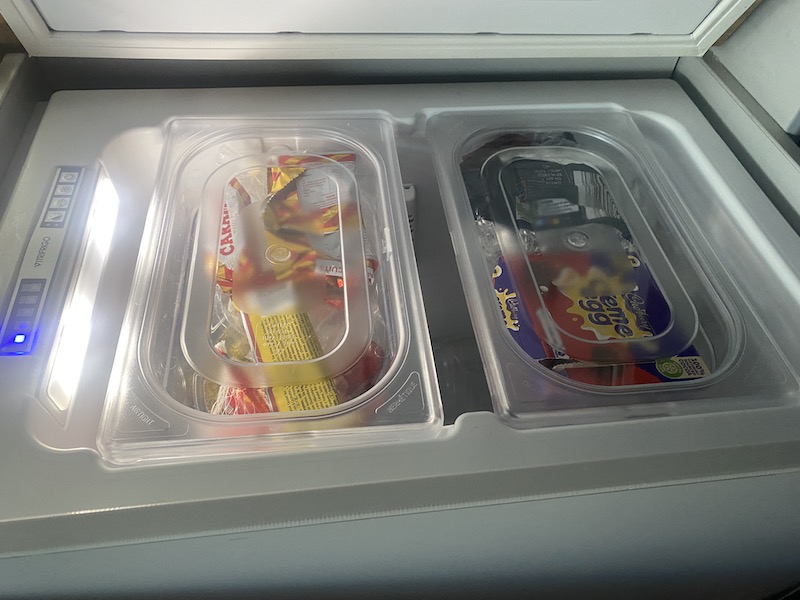What is it like to drive an electric campervan? I took an all-electric Toyota Proace Eco REVOLUTION camper for a three-night adventure in the north-west Highlands of Scotland. Find out more about my trip in an electric camper.
The Toyota Proace Eco REVOLUTION camper – the world’s first all-electric modular campervan – is sold by CampervanCo.
But it’s not “just” a camper because the versatile vehicle can be used as a seven-seater car, a van and also a fully-outfitted campervan. This means owners have a multi-functional mode of transport for general life, work and play.

Some of the features of the Toyota Proace Eco REVOLUTION
- Engine: All electric, 2WD, automatic transmission
- Mileage range: Up to 205 miles with 75kWh version, or 142 miles with the 50kWh version
- Emissions: Zero
- Insurance: Campervan insurance Group 2.
- Road tax: Zero
- Use: Option to use as a 7-seater vehicle, a van or a camper
Camper fittings:
- Detachable kitchen unit
- Detachable bed
- Running hot water (optional)
- Rock-and-roll double bed with expanding upper-body sleeping area
- Heated bed
- Heated floor
- Elevating roof
- Sleeps four people
- Fast induction hob
- Patented extra omni-slide cooker that allows cooking inside or out
- Bluetooth power management display
- Remote control heater
- Full-size fridge with ice compartment and pockets on door for drinks
- Modular kitchen units with expandable storage options
- USB docking stations for phones and electrical outdoor kit
- Swivel front seats
- Removable table for use inside or out
- Unlimited electric power for cooking and devices
- Recessed kitchen sink
- Solid wood worktop extending length of kitchen area
- Optional toilet (included in price)
- Full-length overhead units with tambour doors and multi-functional storage options
- Overhead LED lighting and spotlights to sides and roof
- Water tank with external filler cap
- 240v hook-up for a range of appliances from campsite electrics
- 24v 230Ah Lithium leisure battery for off-grid camping
- Solar panel
- Electric heater (requires hook up to work)
- Price from: £69,995.
- Find out more: CampervanCo or call 01324 489211.

Adventure planning in an EV campervan
Planning where you will go in an electric vehicle depends on the mileage range and also where there are EV chargers available. The 75kWh Toyota Proace Eco REVOLUTION has an “on-paper” range of up to 205 miles. The mileage achieved depends on the driving mode – eco, drive or boost – and what the roads and driving conditions are like.
The best plan is to fully charge the vehicle at home, where most owners will have access to cheaper electricity rates, and then do top-up charges as you travel. How much you can recharge the battery as you travel will depend on the speed of the public charger and the duration rules.
It’s worth noting that in Scotland, there are some useful apps – Charge Place Scotland, Zap-Map, Pod Point and BP Pulse – with information about the location of chargers, charging speed, whether they are working and if they are available (ie no-one else is using them when you want to). Also, many chargers have a limit of up to 45 minutes of charging, while some allow an hour.
So, the start of the plan for my adventure was the location of chargers. Fortunately, there are more chargers than I expected there to be.
I began my trip in the Highlands city of Inverness. I did a top-up charge in Ullapool, a town 60 miles north-west of Inverness; then again at Lochinver, 36 miles from Ullapool; and then again at Ullapool on my way back.
If Ullapool was too busy on my return journey, I knew there would be charge points in other locations en route to Inverness, such as the new Corrieshalloch Gorge Visitor Centre, Strathpeffer and Dingwall, so I could vary my plans as needed.



What’s it like to drive an electric campervan?
I confess that before I set off for the adventure I was quite anxious about driving a fully electric campervan in the Highlands of Scotland. I wasn’t familiar with EV charging and I worried the chargers would not be available, or I would run out of charge between each point.
The journey did require some planning ahead to ensure there were useful charge points. I was also much more aware of mileage “used” as I drove, compared to my own diesel powered van. But once I’d set off, it all worked out very well.
I found the most useful app for checking charge point locations was the Zap-Map. There were actually far more charge points in the villages and towns than appeared to be included in the app but this might be because some are privately owned or community run.
I recommend you get a Charge Place Scotland card or an RFID card for electric vehicle charging because when I tried to use the Charge Place Scotland app to pay for a charge it didn’t work.
The 45-minute charge limit is a bit of a pain. I understand that limits are needed to stop queues and people over-staying and hogging the EV chargers, but it means I never managed a full charge in the allotted time. It’s possible to wait another 30 minutes and return but then you are looking at two hours each time you want to boost the battery.
I guess that when you are on holiday and probably more relaxed with your time, a two-hour stop in a touristy village or town is not a hardship. You can simply explore while the vehicle charges. It’s a good idea to be as laid back as you can about journey times otherwise you might end up being frustrated by the number of stops required.
I found the van very easy to drive. It is similar to driving an automatic vehicle and feels very smooth and simple. I found the “eco” mode to be most sufficient for driving on Highland roads. I cruised along quite happily at 50mph to 60mph.
On some longer or steeper hills, the van needed a bit of power assistance, so I switched to the next mode up. I could feel a surge of power when I did this and I zipped uphill.
While the van is obviously quite a heavy vehicle, especially when fully kitted out as a camper, it didn’t feel heavy or sluggish to drive. It was a very pleasant experience and I was impressed with how speedy the van was.
Of course, the harder I worked the van, the more the battery drained. The vehicle uses less battery power in eco mode and also when being driven on the flat or on downhills. When you make demands on the battery to drive uphill or faster, you can see the mileage total reducing more quickly.
I was far more aware of the mileage and the battery level than when driving my diesel van. There are several reasons for this. Firstly, the technology is new to me and I was keen not to run out of power.
In addition, there is less mileage range in an electric van than my diesel so I needed to pay attention to the charge left. It seemed like it would be quite easy to run out of battery charge and end up stranded.
If I am heading off for a three-night trip in my own van, the chances are a tank of diesel will be more than enough for the whole trip. In an e-van, I needed to make regular stops for battery top ups.
The cost of charging is another consideration. It is cheaper to use a home installed charger and take advantage of cheaper electricity tariffs.
My trip charging costs:
Stop 1: Ullapool: 45 minutes / power drawn: 25.405 kWh / £17.78
Stop 2: Lochinver: 44 minutes / power drawn: 32.879 kWh / £23.02
Stop 3: Ullapool: 44 minutes / power drawn: 28.631 kWh / £20.04
The total cost: £60.84
Total mileage: 260 miles.
Comparing to the diesel automatic version of the Toyota Proace and reducing the stated WLTP miles per gallon to take account of the weight of the camper conversion, the result is calculated at £54.69p for diesel, assuming 159.9/l, for a 260-mile journey.
Also, for the same journey, if I’d been able to top up the electric at home, would have cost £34.68 (based on the highest allowable electricity tariff).
I had expected greater cost savings but electricity prices have increased recently and this means that charge points cost more. I would suggest that charging will need to be cheaper to encourage more people to use electric vehicles.
The best option is to charge from a home charge point but this is obviously not possible when you are holidaying in a van.


Sleeping and eating in Toyota Proace Eco REVOLUTION camper
The Toyota Proace Eco REVOLUTION camper easily converts from a passenger vehicle to a mobile home-from-home. It has all the facilities you’ll need for a few days or a many weeks away, plus some great luxuries for an off-grid trip, as well as holidays staying at campsites.
The advantage of a campsite is the use of electric hook up. However, you can still enjoy all the electrical appliances even when off-grid and without access to an electricity hook up.
The van has a leisure battery that is boosted by solar panels. Electric powered devices include a heater, plus other heating options to take the chill off, such as a ceramic fan heater and heated chairs.
I really enjoyed the electric set up of induction hob, microwave, fridge and plug points etc. The hob was very fast and efficient for cooking. There is the option of a second hob that can be used outdoors. To do this, you open the second side door, behind the kitchen galley, and push the hob outdoors. In this way you can cook outdoors should you fancy this.
The microwave is a very useful addition to van life. I used it to reheat a homemade quiche and for warm up a second cup of coffee. It worked just like my home microwave.
The fridge is large and deep. It is accessed from a top lid, too, which I really liked. I really liked the larger, upright fridge.
I charged my phone and laptop overnight, too.
The van has a useful table that can be used inside and outside.
The double bed is easy to pull out to flat and offered a great night’s sleep. My tip is to add a mattress topper for greater comfort. Campervan beds can be quite hard and I find the mattress topper more comfortable for my boney hips.
There is the option to sleep higher up in the pop-up top area. This might feel a bit chilly on a cold night, but equally it will be lovely and airy on a hot night. You’ll need an inflatable mattress of some kind because the pop-up top platform is a hard surface.
There is a portable style toilet on board. This is very useful when off-grid. You do need to empty the collection cartridge in a responsible way. This means using a Chemical Disposal Point at a campsite or at other places, such as aires, or at home.
Overall, the Toyota Proace Eco REVOLUTION camper is compact and cosy but with all the facilities you will need. The pop-up roof is great because it allows you to stand up in the van and offers the option of an extra sleeping space.
The driver and front passenger seats swivel round, which is useful. This means there are four internal seats that can be used when you stop. The swivel seats make the inside of the van feel more roomy.
Campervan life needs to be organised and I take a large fabric bag with me for bedding to be organised during the day. I carry clothing, shoes and kit in plastic containers or large, re-useable shopping bags.
The van has drawers and cupboards for carrying crockery, cutlery, kettle, pans and food products etc.
It’s the ideal size for one or two adults to enjoy a holiday, or a family with one or two children. If I was on holiday with a family, I would opt for campsite stops and a side awning to give more room for “living”.

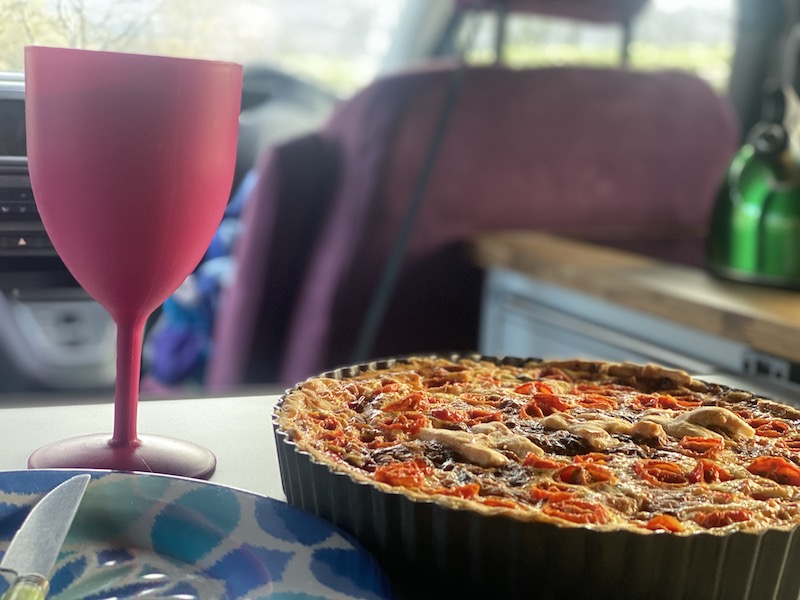
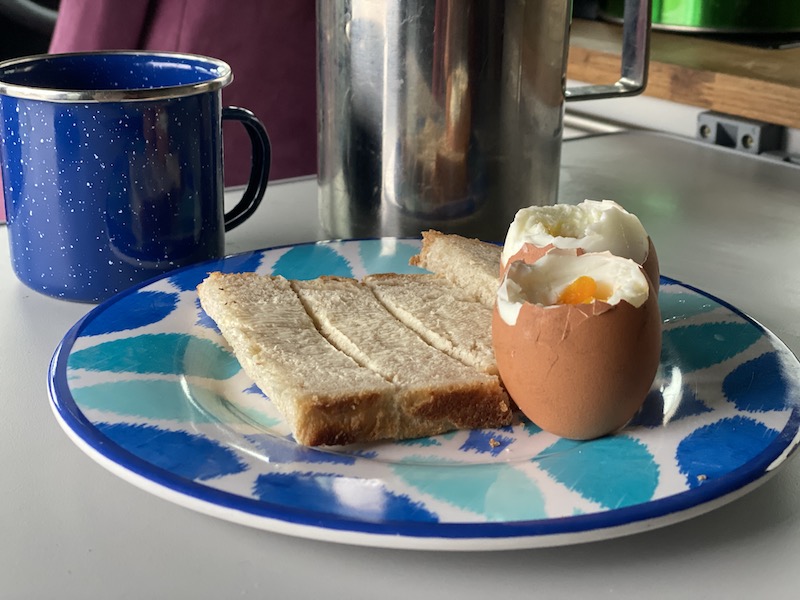
Final thoughts: All-electric Toyota Proace Eco REVOLUTION camper
Holidaying in an electric camper requires a different way of thinking. There needs to be more planning and I would suggest that you do not try to travel too far but focus on one smaller area, such as Ullapool and Assynt as I did.
If you do want to make a longer journey, you should factor in plenty of stops for charge boosts. Fairly frequent top-up battery boosts is the best way to travel and so long as there are charge points located along your route, you can easily enjoy many hundreds of miles of journeying.
I preferred to stop for EV charges in places where I could combine with a meal stop or to go shopping. Another tip is to go for a run or a walk while the van is on charge.
I found the campervan easy to drive and I liked the sense of not adding carbon pollution to my journey.
I felt like I was driving “clean”.
I’m aware there are plenty of pros and cons to e-vehicles and, indeed, travel by private cars but this is not a something I want to write about here.
If you are looking for a new vehicle and you hope to buy electric, then having transport that works as a large car, a van and a camper might well appeal. The Toyota Proace Eco REVOLUTION does all of this.
Note: I was loaned the Toyota Proace Eco REVOLUTION camper by CampervanCo to drive and test in return for an honest review and article. The trip didn’t cost me anything.

